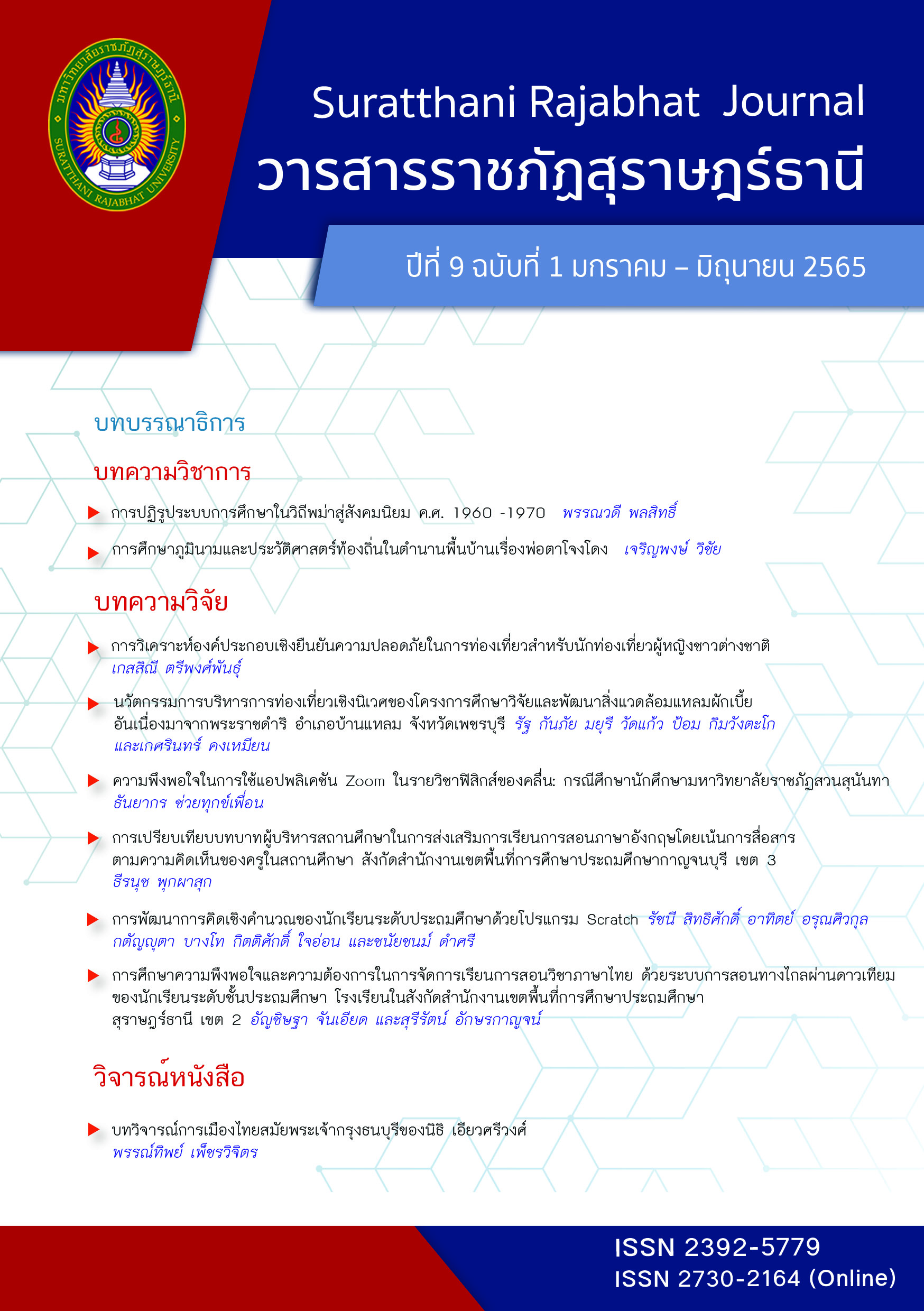Developing Computational Thinking of Elementary School Students with Scratch Program
Main Article Content
Abstract
The objectives of this action research were to investigate a teaching method that enhanced Prathom 4 students’ computational thinking skills. The participants in this action research were purposively selected from Prathom 4 students enrolled in Science Mathematics Technology Program (SMTP). The researchers adopted the Scratch Program as a tool for this action research. According to core components of computational thinking framework, the result indicated positive progress on students’ computation thinking. The average score of the algorithms component was reported the highest score at = 3.95, while the decomposition component gained the average score of
= 3.57, and the abstraction component demonstrated the lowest average score of
= 3.14 respectively. The average score across the four components was reported at
= 3.45.
Article Details

This work is licensed under a Creative Commons Attribution-NonCommercial-NoDerivatives 4.0 International License.
References
โกสิทธิ์ ทองคำเจริญ. (2560). การเขียนโปรแกรม Scratch เพื่อส่งเสริมความคิดสร้างสรรค์. https://Krukosit.wordpress.com/2012/01/17
บัญญพนต์ พูลสวัสดิ์ และพนมพร ดอกประโคน. (2560). เกมบนโปรแกรมเชิงจินตภาพ และแนวคิดเชิงคำนวณอย่างเป็นระบบ. วารสารวิทยาศาสตร์และเทคโนโลยี, 6(2), 9-16.
วีระพงษ์ จันทรเสนา และมานิตย์ อาษานอก. (2563). ผลการเรียนแบบผสมผสานโดยใช้โปรแกรมเชิงจินตภาพที่ส่งเสริมการคิดเชิงคำนวณ ผลสัมฤทธิ์ทางการเรียน และความสามารถการเขียนโปรแกรม สำหรับนักเรียนชั้นประถมศึกษาปีที่ 4. วารสารการบริหารนิติบุคคลและนวัตกรรมท้องถิ่น, 6(2), 1-13.
สถาบันส่งเสริมการสอนวิทยาศาสตร์และเทคโนโลยี. (2560). คู่มือครูรายวิชาพื้นฐานวิทยาศาสตร์ เทคโนโลยี (วิทยาการคำนวณ). กรุงเทพฯ :กระทรวงศึกษาธิการ.
Bloom, B.S., et al. (1956). A Taxonomy of Educational Objectives: Handbook I The Cognitive Domain. Longman, Green Co., New York.
Robbins, S. P. (1996). Prentice Hall Organization behaviour: Concept, Controversies and Applications. (7th ed.) .Englewood Cliffs; NJ :Prentice Hall.
Wing, J. M. (2006). Computational Thinking. Communications of the ACM, 49(3), 33-36.
Wing, J.M. (2008). Computational thinking and thinking about computing. Philosophical transactions of the royal society of London A: mathematical, physical and engineering sciences, 366(1881), 3717-3725.
Wing, J. M. (2011). Computational thinking: What and why. http://www.cs. cmu.edu/link/research-notebook-computational-thinking-what-and-why.


